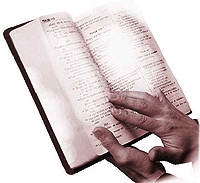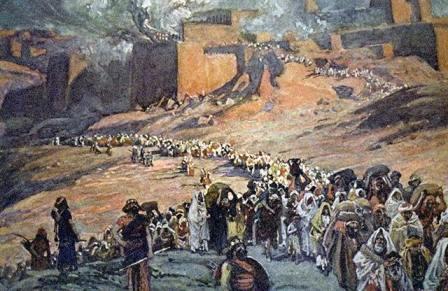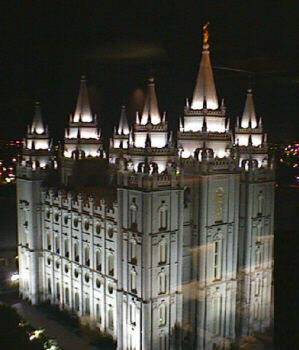|
According to tradition and
the best evidence, just to the south of Jerusalem there lies
a valley that has been known from antiquity as the Valley of
the Son of Hinnom. When the Israelites conquered the land,
Joshua established the valley as part of the border between
Judah and Benjamin (Joshua 15:8). Unfortunately, we
have no revealed knowledge regarding Hinnom or his sons. The Valley of the Sons of Hinnom is no ordinary valley; it was notorious in ancient Israel on account of the events that transpired there. It is in the Valley of the Sons of Hinnom where an altar was built to Baal and to Molech, and where kings passed their children through the fire as an offering to Molech (2 Chronicles 28:3, 2 Chronicles 33:6, Jeremiah 7:31-32; 19:6; 32:35). The area of the altar was named Topheth, apparently because of the drums played to drown out the cries of the children as they were being sacrificed to the idol. Thus Israel defiled the land, and despite the fact that Josiah destroyed Topheth and ended the practice (2 Kings 23:10), the land was considered defiled. The Valley of the Sons of Hinnom was not just haunted by the cries of all the children murdered there; it became the trash heap of Jerusalem after the exile. Easton's Bible Dictionary describes the function of the location as follows: "There the dead bodies of animals and of criminals, and all kinds of filth, were cast and consumed by fire kept always burning." The Valley of the Sons of Hinnom, therefore, was a most awful place, haunted by past offenses and a constant source of everything that was impure. One can only imagine the sights and smells of such a place-- trash everywhere, dead bodies strewn about, the constant stench of fire and decomposition. Falling into such a valley was indeed the stuff of a nightmare! The descriptive value of such a place was not lost on the ancient inhabitants of Jerusalem. Jesus Himself spoke of the Valley of Hinnom 12 times by its Greek term Gehenna. Gehenna will not be found in the text of most translations, although it might be found in the notes: Jesus' concern is not about the literal valley near Jerusalem but how it metaphorically describes the eternal hell awaiting those who have not obeyed Him (2 Thessalonians 1:6-9). Gehenna-- hell-- is not a place for anyone to go! Jesus uses Gehenna most often in a way similar to Matthew 5:29-30: "And if thy right eye causeth thee to stumble, pluck it out, and cast it from thee: for it is profitable for thee that one of thy members should perish, and not thy whole body be cast into hell. And if thy right hand causeth thee to stumble, cut it off, and cast it from thee: for it is profitable for thee that one of thy members should perish, and not thy whole body go into hell." "Hell" in these verses is the Greek Gehenna; Jesus speaks in similar terms in Matthew 18:9, Mark 9:43, Mark 9:45, and Mark 9:47, in terms of an eye, a hand, an arm, and a foot. We should not conclude from these passages that Jesus thinks that we ought to literally remove body parts, just as we do not believe that Jesus speaks about the literal valley near Jerusalem. Instead, Jesus tries to impress upon us the terrible consequences of sin and how it is better to take extreme measures than to risk the hellfire to come. Gehenna is also found in Matthew 10:28: "And be not afraid of them that kill the body, but are not able to kill the soul: but rather fear him who is able to destroy both soul and body in hell." It is easy to become afraid of men, especially when one considers the various means by which men are able to kill one another. Nevertheless, men can only kill the body; truly we ought to fear Him who is not only able to kill the body but also can cast the soul into the fiery trash pit of Gehenna for eternity! Other references to Gehenna relate to a man who reviles his brother (Matthew 5:22), the destination of the Pharisees and their proselytes (Matthew 23:15, 33), and the result of the unbridled tongue (James 3:6). It is manifestly clear that Gehenna is not a pleasant place! The use of the image of the Valley of Hinnom is gruesome in its descriptive power, and the point should be clear. Just as all the trash and the bodies of worthless men were cast into the Valley of Hinnom to be burned in Jerusalem, so God will cast all of His trash into Gehenna and burn it with eternal, unquenchable fire. It is the place reserved for unrepentant sinners, those not willing to do whatever is necessary to avoid sin and to follow God. Talking about hell is not popular in our society. Many people deny its existence; many others cannot mentally reconcile how a loving God could cast people into such a place. Though it may be unpopular and "out of season" (cf. 2 Timothy 4:2), the reality of hellfire for the condemned must be preached and remembered. Of all persons in the New Testament, Jesus speaks the most about hell; such surely should embolden us in warning people about its reality and its ferocity. Yes, sin often times leads to earthly consequences. Yes, sin leads to separation from God. Nevertheless, sin also leads to a soul being thrown into God's trash pit, in the midst of all the other trash burning and decomposing, a place with sights, sounds, and smells that are absolutely incomprehensible. If nothing else should make us think twice about being friendly with sin, looking toward an eternity of burning in a trash heap certainly should! Furthermore, we should consider those in our lives that may be heading to that fiery trash heap, and do everything we can to warn them and to encourage them to obey Jesus so that they can avoid that horrendous fate! We have no desire for anyone to become a part of God's trash heap-- be saved and faithful today! |









